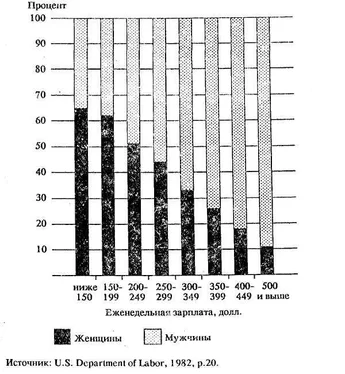В ситуациях подобного рода социологи иногда сообщали о себе; ложные сведения; чтобы завоевать доверие, они выдавали себя за людей, в чем-то похожих на них. Например, в 15-й главе мы узнали, что группа исследователей выдавала себя за верующих, сторонников культа. Согласно их объяснению, если бы они назвали себя исследователями, их исключили бы из группы, и они подверглись бы нападкам со стороны верующих. В других случаях исследователи полностью раскрывают себя, но скрывают подлинные цели исследования. Однако часто исследователи вводят обследуемых в заблуждение, опасаясь, что в противном случае вызовут искажения в их ответах.
В принципе подобный обман или ложная информация о мотивах действий исследователя неэтичны. Когда подобный обман или надувательство становятся нормой в повседневной деятельности профессионалов, наверное, они заслуживают еще более суровой критики. Однако такой обман должен быть сопоставлен с важностью получения научно обоснованных результатов. В свою очередь, их важность должна сопоставляться с потенциальным психологическим или физическим ущербом, который может быть нанесен обследуемым. Если существует риск нанести им вред, даже потенциальная ценность исследовательских проектов не может служить оправданием обмана.
ABC News-Harris Survey. Leisure time activities. New York: Chicago Tribune Syndicate, Inc., Jan. 1, 1979.
ABC News-Harris Survey. Profile of the 1980 electorate. New York: Chicago Tribune Syndicate, Inc., May 29, 1980.
Aberle, D., Cohen, A., Davis, K., Levy, M. J. Jr. & Sutton, F. X. The functional prerequisites of a society. Ethics, 1950, 9, 100–111.
Abrahamson, M. Informal groups in the research laboratory. In M. Abrahamson (Ed.), The professional and the organization. Chicago: Rand McNally, 1967.
Abrahamson, M. Urban Sociology (2nd ed.). Englewood Cliffs, N.J.: Prentice-Hall, 1980.
Adorno, Т., Frenkel-Brunswik, E., Levinson, D.J. & Sanford, R.N. The authoritarian personality. New York: Harper, 1950. [27] На рус. яз.: «Социологические исследования» — N 3, 1993 г. (ред.)
Aldrich , H.Е. Technology and organizational structure: A reexamination of the findings of the Aston Group. Administrative Science Quarterly, 1972, 17, 26–43.
Alexander, K.L., & Eckland, B.K. High school context and college selectivity: Institutional constraints in education stratification. Social Forces, 1977, 56(1), 166–168.
Allen, F.L. The big change: America transforms itself 1900–1950. London: H. Hamilton, 1952.
Antonio, R.J. The contradiction of domination and production in bureaucracy: The decline of the Roman Empire. American Sociological Review, 1979, 44. 895–912.
Arensberg, C.M., & Kimball, S.T. Family and community in Ireland. Cambridge, Mass.: Harvard University Press, 1948.
Aries, P. Centuries of childhood. New York: Vintage, 1965.
Arkin, W., & Dobrofsky, L.R. Military socialization and masculinity. Journal of Social Issues, 1978, 34, 151–168.
Arling, G. The elderly widow and her family and neighbors. Journal of Marriage and the Family, 1976, 38, 757–768.
Asch, S.E. Effects of group pressure upon the modification and distortion of judgments. In H.Guetzkow, Groups, leadership, and men. Pittsburgh: Carnegie Press, 1951.
Astin, A.W. The measured effects of higher education. Annals of the American Academy of Political and Social Science, 1972, 404, 1-20.
Atchley, R.C. The social forces in later life (3rd ed.). Belmont, Calif.: Wadsworth, 1980.
Avery, P.A. With ERA dying, what's ahead for women's groups? U.S. News & World Report, June 28, 1981, p.55.
Avineri, S. Letter from Israel. The Partisan Review, 1982, 49, 284-93.
Bales, R.F. The equilibrium problem in small groups. In A.P. Hare, E.F.Borgatta, & R.F.Bales, Small groups. New York: Knopf, 1965.
Bales, R.F., & Slater, P.E. Role differentiation in small decision-making groups. In T.Parsons & R.F. Bales (Eds.), Family, socialization, and interaction process. New York: Free Press, 1955.
Banton, M . Six orders of race relations. In J. Stone (Ed.), Race, ethnicity and social change. North Seituate, Mass.: Duxbury Press, 1977.
Barberis, M. America's elderly: Policy implications. Population Bulletin, Policy Supplement, 1981, 35(4), 3-36.
Bardwick, J.M., & Douvan, E . Ambivalence: The socialization of women. In J. M. Bardwick (Ed.), Readings on the psychology of women. New York: Harper & Row, 1972.
Barnet, R.J. Minerals, food, and water. The New Yorker, March 31, 1980, pp. 40–91.
Baron, H. Black powerlessness in Chicago. Trans-Action, November 1968, pp. 27–33.
Barron, R.D., & Norris, G.M. Sexual divisions and the dual labor market. In D.L. Barker & S. Allen (Eds.), Dependence and exploitation in work and marriage. New York: Longman, 1976.
Barry, H. III, Bacon, M.K., & Child, I.L. A crosscultural survey of some sex differences in socialization. In C.Harrington (Ed.), Approaches to learning. New York: MSS Information Corp., 1973.
Brain, R. Friends and lovers. New York: Basic Books, 1976.
Brandwein, R. F., Brown, С A., & Fox, E. M. Women and children last: The social situation of divorced mothers and their families. Journal of Marriage and the Family, 1974, 36, 498–514.
Braverman, H. Labor and monopoly capital: The degradation of work in the twentieth century. New York: Monthly Review Press, 1974.
Breed, W. Occupational mobility and suicide among white males. American Sociological Review, 1963, 28, 178–179.
Brim, O. G., Jr. Sociology and the field of education. New York: Russell Sage, 1958.
Brim, O. G., Jr . Socialization through the life cycle. In O. G. Brim, Jr., & S. Wheeler (Eds.), Socialization after childhood: Two essays. New York: John Wiley, 1966.
Brooks, H. Scientific concepts and cultural change. Daedalus, Winter 1964. Brown, В., & Grotberg, E.H. Head start: A successful experiment. Courier, 1980, 30, 337–344.
Brown, F. J., & Roucek, J.S. Our racial and national minorities: Their history, contributions, and present problems. Endlewood Cliffs, N.J.: Prentice-Hall, 1939.
Brown, G.H. Degree awards to women: An update. Washington, D.C.: National Center for Education Statistics, U.S. Department of Health, Education, and Welfare, 1979.
Brown, J.S. A comparative study of deviance from sexual mores. American Sociological Review, 1952, 17, 138.
Brown, L.R., & Finesterbusch, G. Man, food, and environment. In W.W. Murdoch (Ed.), Environment: Resources, pollution, and the society. Stamford, Conn.: Sinauer Associates, 1971.
Читать дальше












